Lesson 15
Build and Count with Solid Shapes
Warm-up: Estimation Exploration: How Many Cubes? (10 minutes)
Narrative
Required Materials
Materials to Gather
Required Preparation
- Make a tower with 16 connecting cubes.
Launch
- Groups of 2
- Display a tower of 16 connecting cubes.
- “What is an estimate that’s too high?” “Too low?” “About right?”
- 1 minute: quiet think time
Activity
- “Discuss your thinking with your partner.”
- 1 minute: partner discussion
- Record responses.
- “Let’s look at the same connecting cubes in a different way.”
- Break apart the tower, fill a 10-frame with connecting cubes, and put the rest of the cubes in a pile.
- “Based on this, do you want to revise, or change, your estimates?”
- 1 minute: quiet think time
- 1 minute: partner discussion
- Record responses.
Student Facing
-
Record an estimate that is:
too low about right too high -
Record an estimate that is:
too low about right too high
Student Response
For access, consult one of our IM Certified Partners.
Activity Synthesis
- “Let’s look at our revised estimates. Why were these estimates more accurate the second time?” (We could see there were 10 cubes and some more.)
- “There are 16 connecting cubes.”
Activity 1: A Tall Tower (10 minutes)
Narrative
The purpose of this activity is to build towers with solid shapes and count how many solid shapes are in the tower. Students will need to think strategically about which shapes to use and their properties. For stacking shapes, it is important to have flat faces. Students may notice that spheres can not be used to build towers. Pyramids and cones can be used as the top of the tower, but nothing can be stacked on top of them. The purpose of the activity synthesis is to discuss the attributes of shapes and why students chose the shapes they did to build their towers.
Advances: Listening, Speaking
Required Materials
Materials to Gather
Launch
- Groups of 2
- Give students access to solid shapes and geoblocks.
- “Use solid shapes to make the tallest tower you can.”
- 3 minutes: independent work time
Activity
- “Compare with your partner. How are your towers the same? How are they different?” (Sample response: We both used a lot of cubes. My tower has a point on top. My partner’s tower is taller.)
- 30 seconds: quiet think time
- 1 minute: partner discussion
- Share responses.
- “Write a number to show how many solid shapes you used in your tower.”
- 2 minutes: independent work time
- “Did you or your partner use more solid shapes in their tower?”
- 30 seconds: quiet think time
- 1 minute: partner discussion
- Share responses.
Student Facing
How many solid shapes did you use in your tower?
_______________
Activity Synthesis
- Invite students to share their towers.
- “What shapes did ____ use?” (There are some cubes and a pyramid on top.)
- “How many shapes did ___ use?” (4)
- “Did you use a sphere in your tower? Why?” (No. I could not put anything on top of it because it’s round. It rolled away because it’s round.)
- “Did you use a cone in your tower?” (It worked at the very top but I could not put anything on top of the cone.)
Activity 2: What Can You Make With These Shapes? (15 minutes)
Narrative
The purpose of this activity is for students to build with a given number of solid shapes. Students practice counting out objects as they count out specific numbers of solid shapes. After they build with the shapes, students determine how many shapes they used altogether, which may require rearranging what they built in order to count accurately. Students describe and compare what they built with their partner.
Supports accessibility for: Social-Emotional Functioning
Required Materials
Materials to Gather
Required Preparation
- Each group of 4 students needs 6 cubes, 6 cylinders, and 6 cones.
Launch
- Groups of 2
- Give students access to solid shapes.
- “Work with your partner and use 5 cubes, 4 cylinders, and 6 cones to build. Make sure that what you build has at least one tower.”
- 3 minutes: independent work time
Activity
- “How many shapes did you use? Write a number to show how many shapes you used.”
- 2 minutes: independent work time
- “Pair up with another group and describe what you made. How are they the same? How are they different?”
- 30 seconds: quiet think time
- 2 minutes: partner discussion
- Monitor for students who use comparison language such as more or taller when they compare their creations.
- Repeat the steps for the second problem.
Student Facing
-
5 cubes
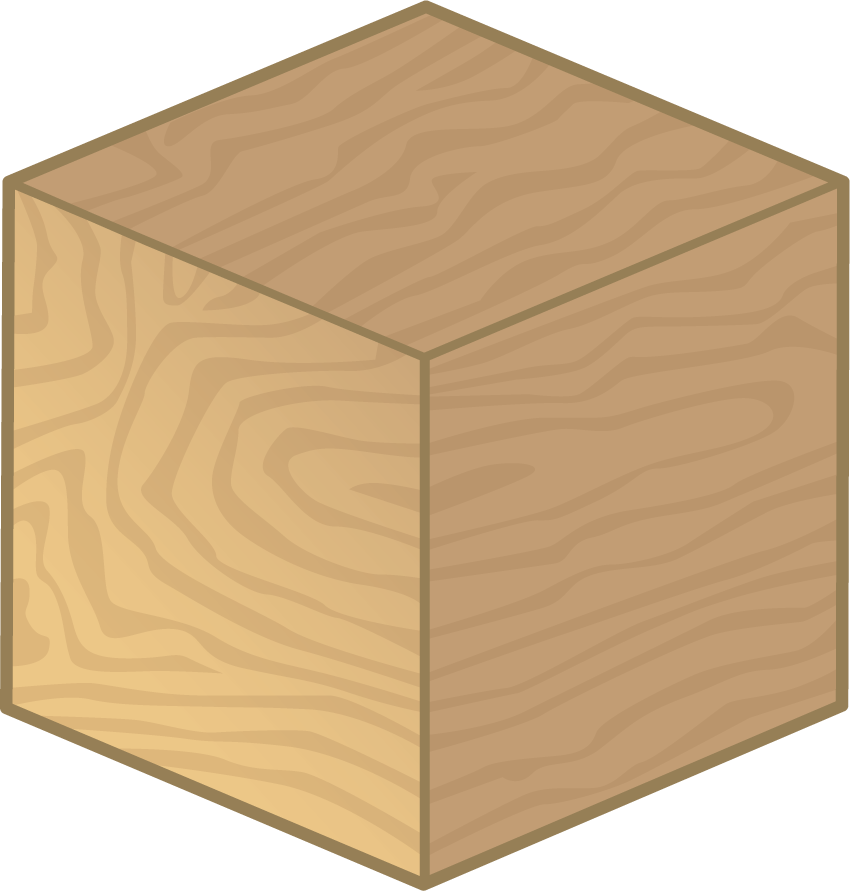
4 cylinders

6 cones
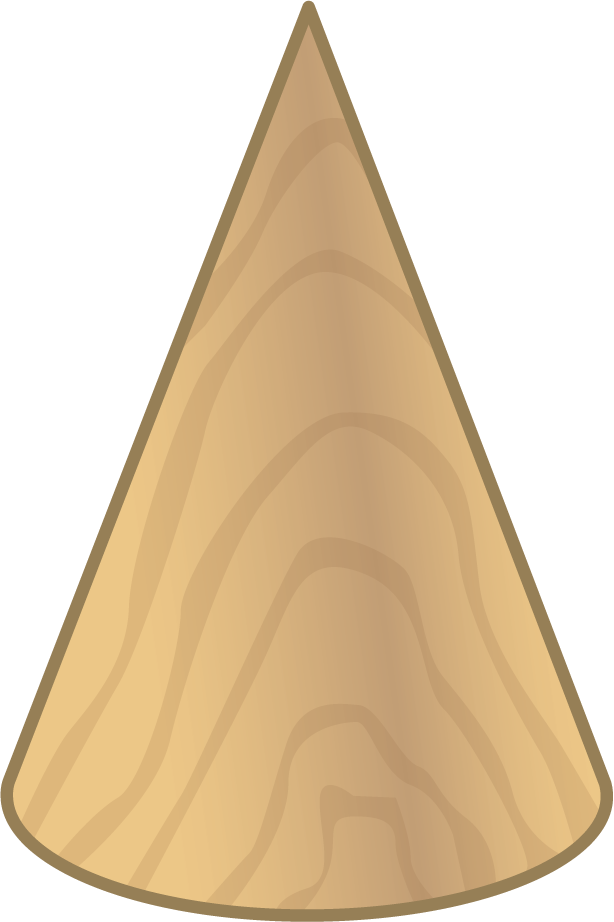
How many shapes did you use all together?
_______________
-
3 cones

4 cubes

5 cylinders

How many shapes did you use all together?
_______________
Student Response
For access, consult one of our IM Certified Partners.
Advancing Student Thinking
- “How did you figure out how many solid shapes were in the tower?”
- “How could you rearrange the solid shapes to make them easier to count?”
Activity Synthesis
- Invite previously identified groups of students to share what they built. (I made a house with cubes and pyramids that has 2 towers. My towers are taller than their towers.)
Activity 3: Centers: Choice Time (20 minutes)
Narrative
The purpose of this activity is for students to choose from activities that offer practice with number and shape concepts.
Students choose from any stage of previously introduced centers.
- Build Shapes
- Geoblocks
- Counting Collections
- Match Mine
- Shake and Spill
Required Materials
Materials to Gather
Required Preparation
- Gather materials from:
- Build Shapes, Stages 1-3
- Geoblocks, Stages 1-4
- Counting Collections, Stage 1
- Match Mine, Stages 1 and 2
- Shake and Spill, Stages 1-4
Launch
- “Today we are going to choose from centers we have already learned.”
- Display the center choices in the student book.
- “Think about what you would like to do first.”
- 30 seconds: quiet think time
Activity
- Invite students to work at the center of their choice.
- 8 minutes: center work time
- “Choose what you would like to do next.”
- 8 minutes: center work time
Student Facing
Choose a center.
Build Shapes
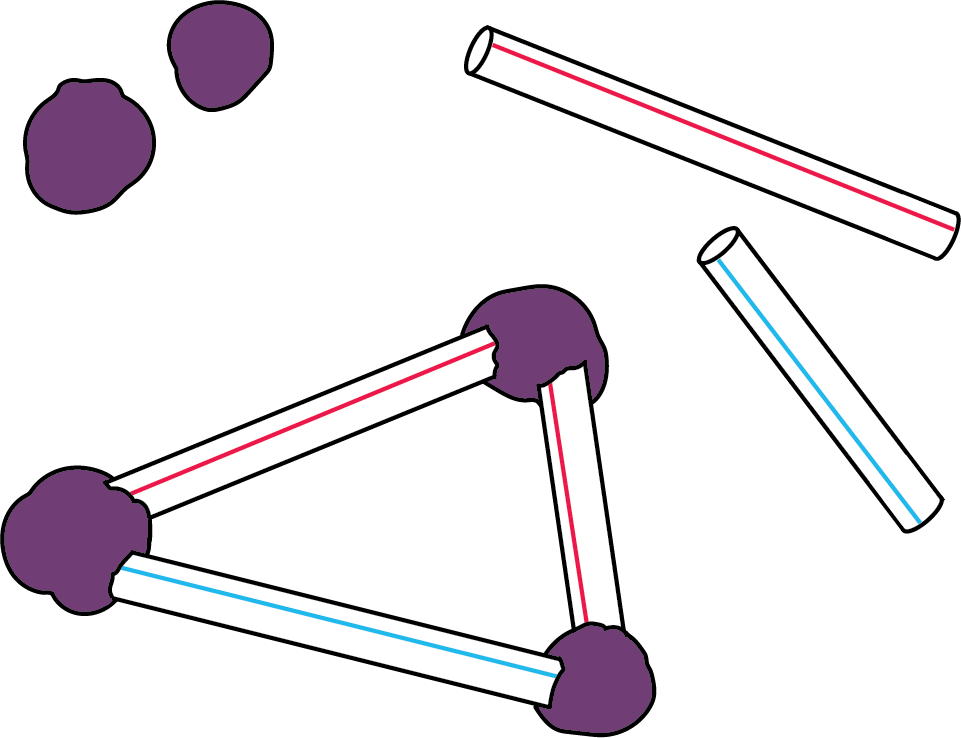
Geoblocks
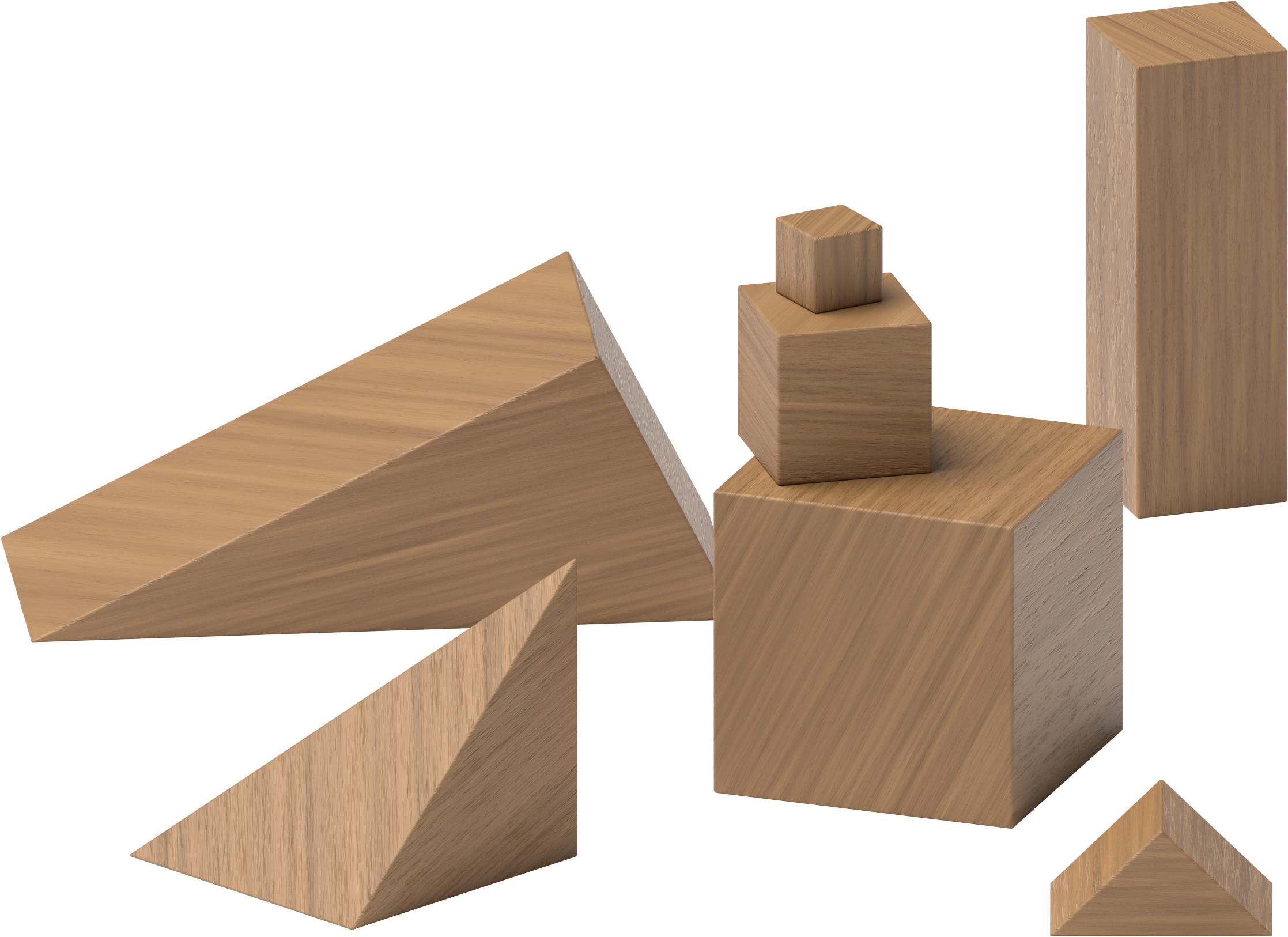
Counting Collections
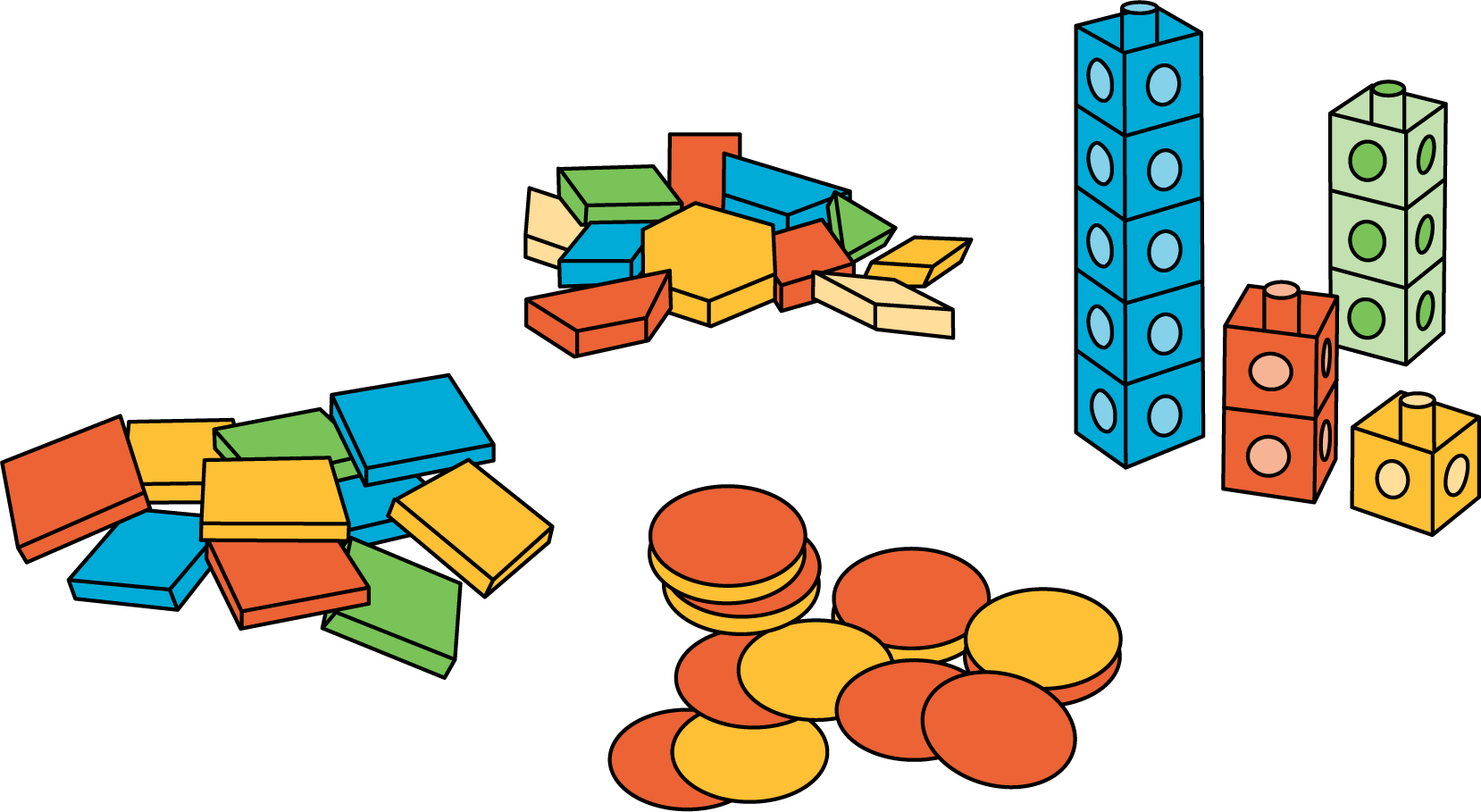
Match Mine

Shake and Spill
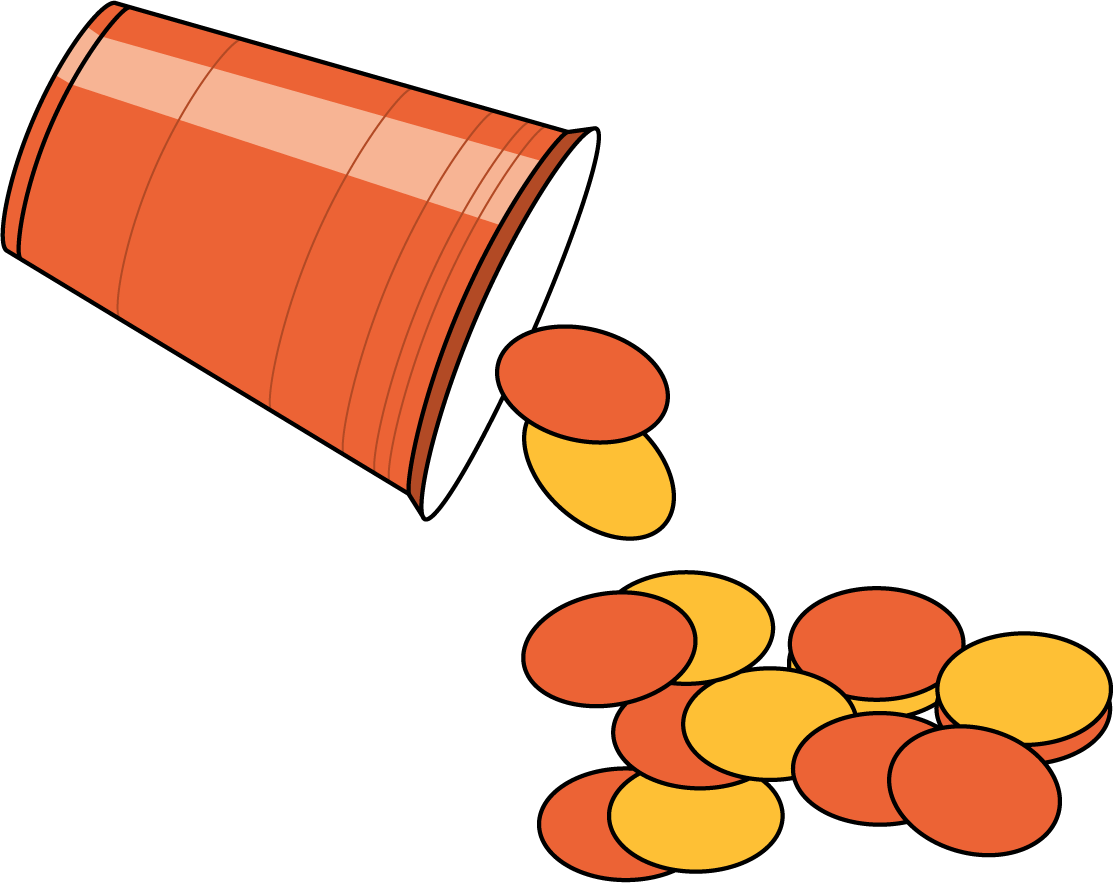
Activity Synthesis
- “Choose one of the centers that you played today. Tell your partner how you would explain the rules of the center to a new student. What tips would you give them?”
Lesson Synthesis
Lesson Synthesis
“Today we built with and counted solid shapes.”
Display a tower created out of a variety of solid shapes.
“What ‘how many’ questions can you ask about this tower?” (How many shapes are there? How many cubes are there? How many cones are there?)
“These are ideas of questions that you can ask when you build with shapes in centers.”
Cool-down: Unit 7, Section B Checkpoint (0 minutes)
Cool-Down
For access, consult one of our IM Certified Partners.